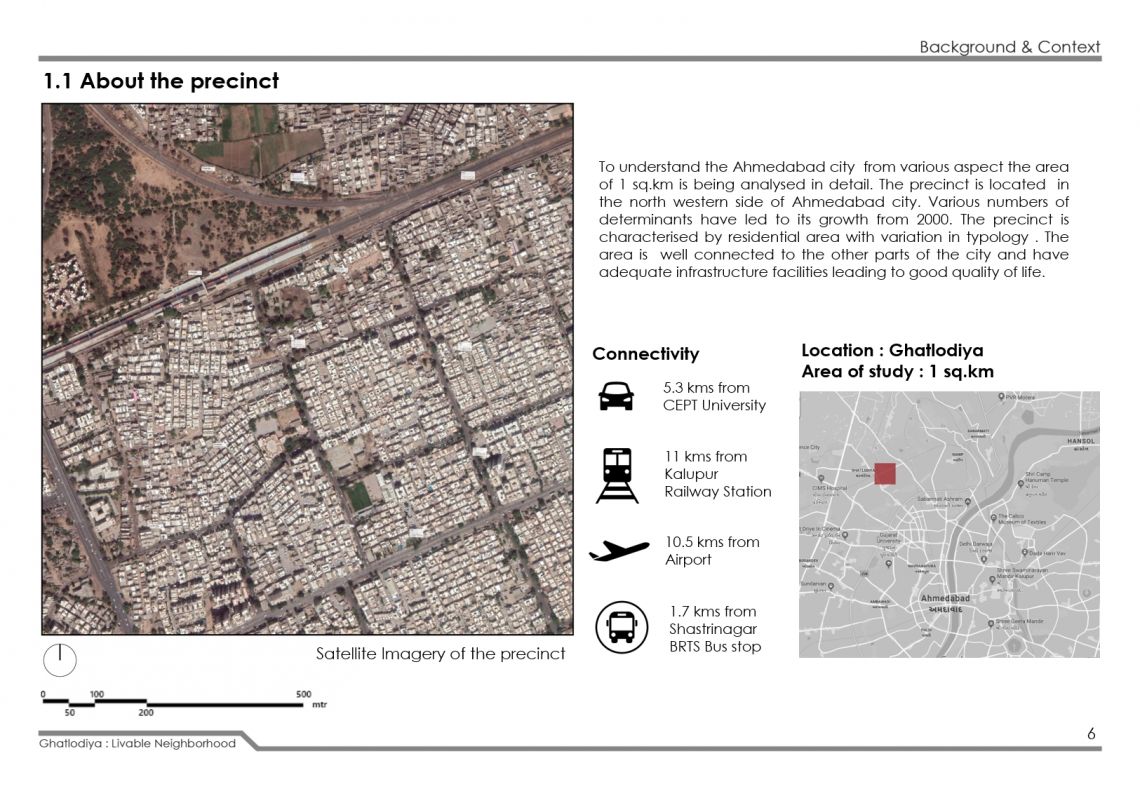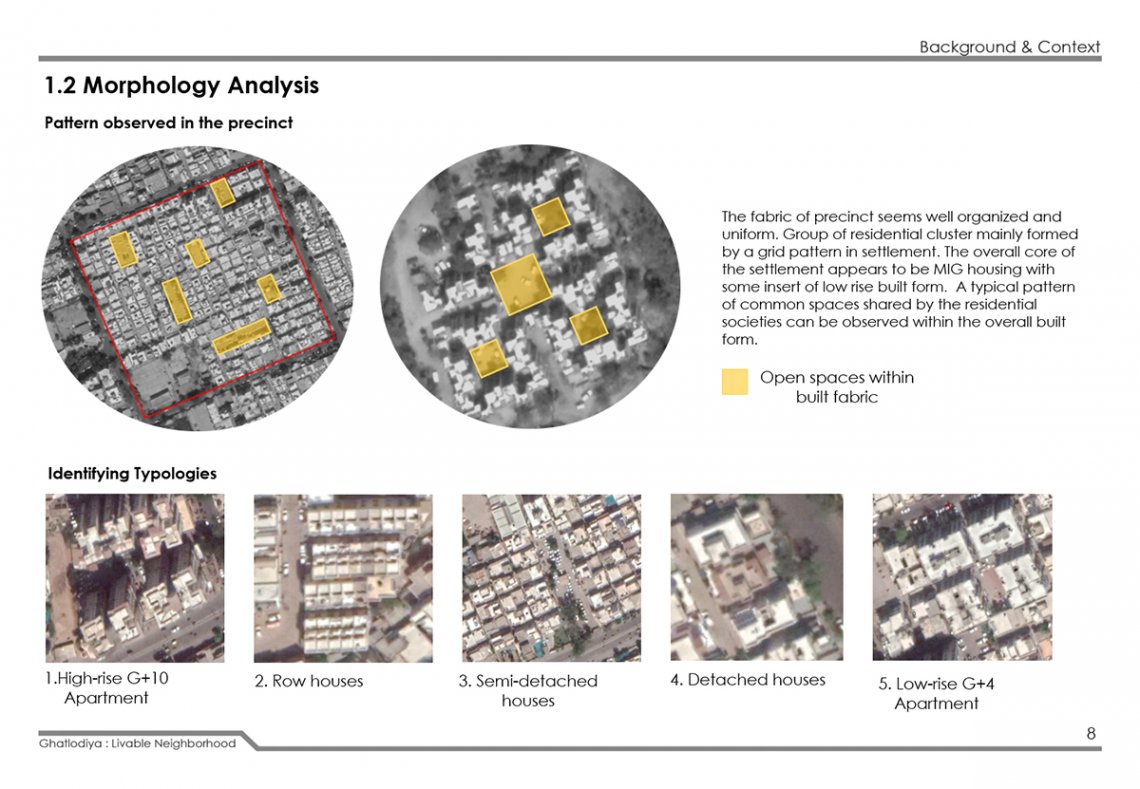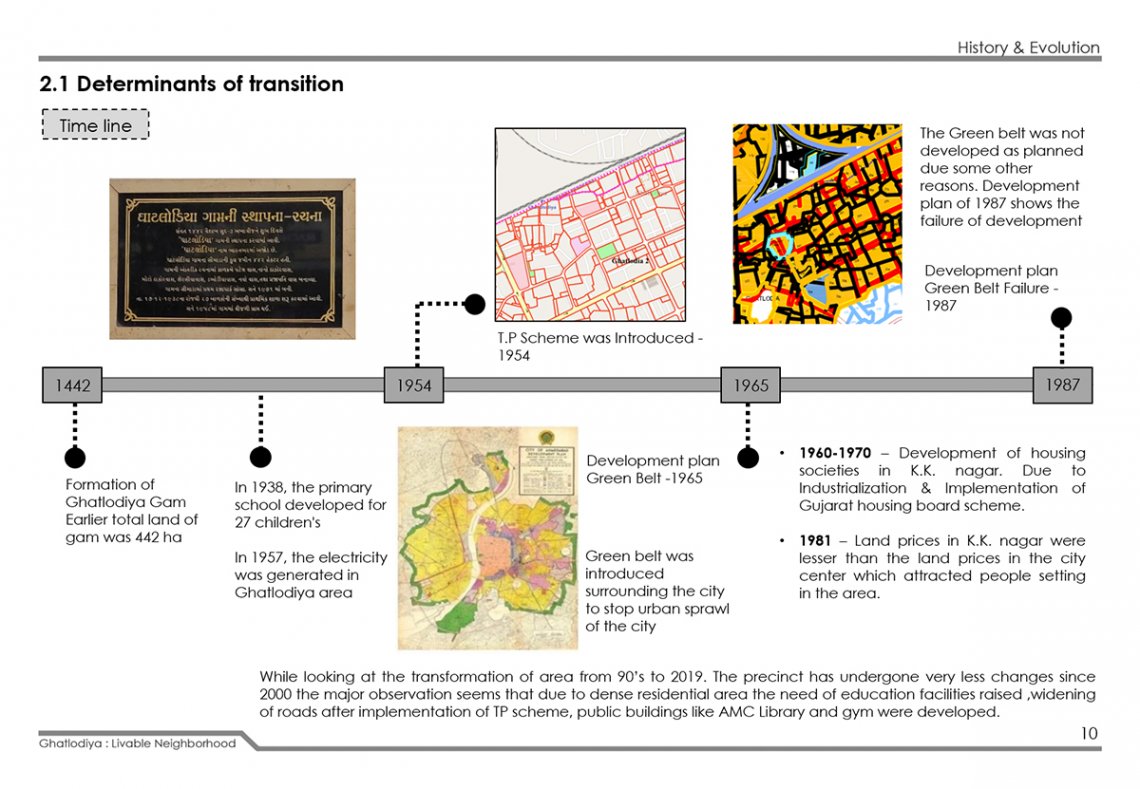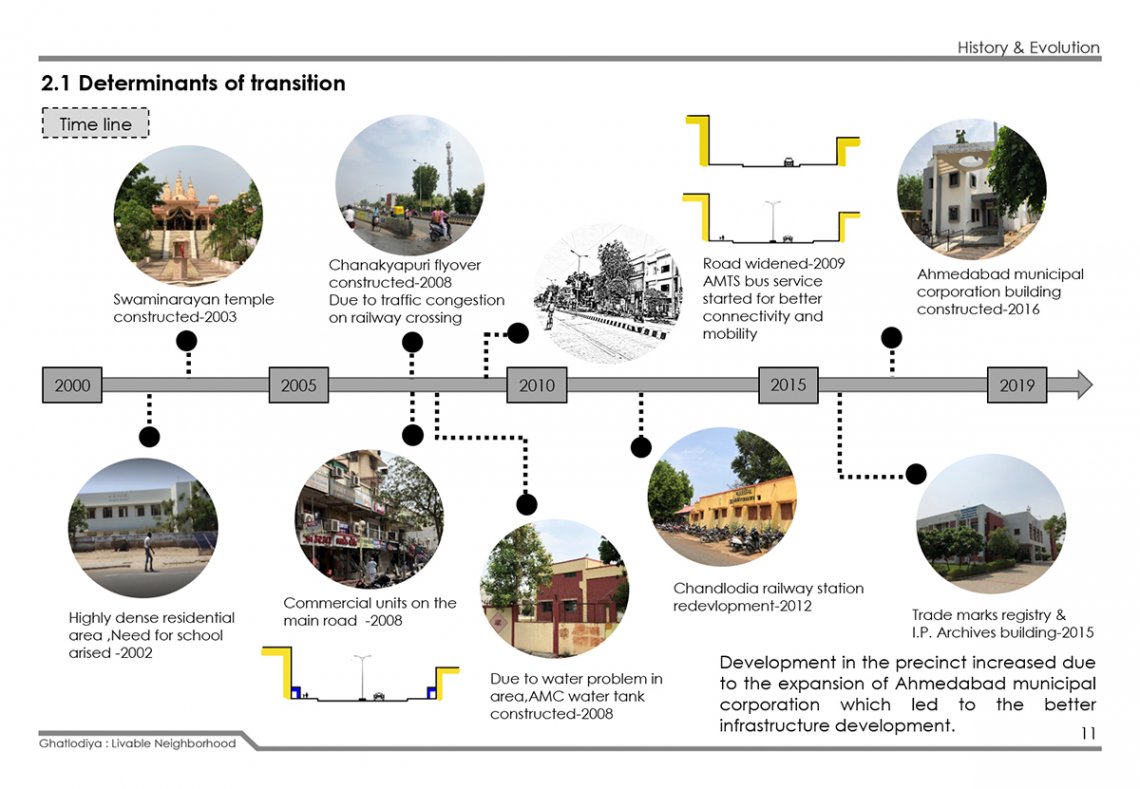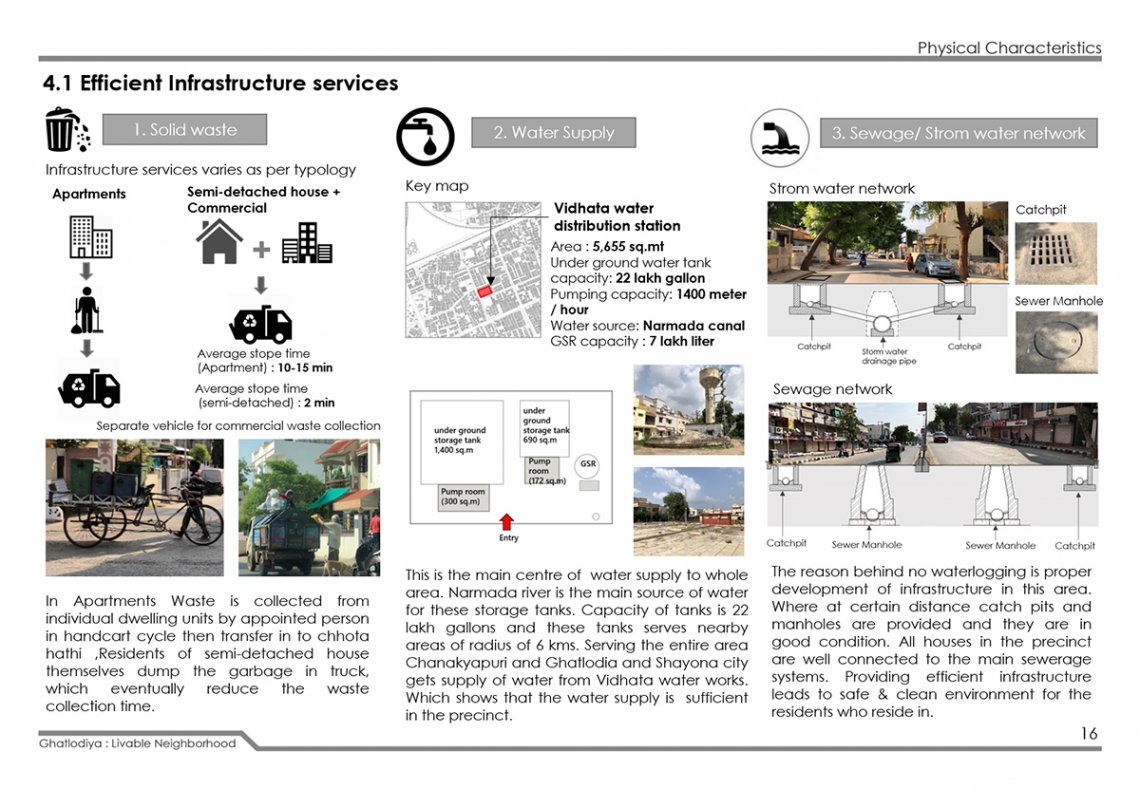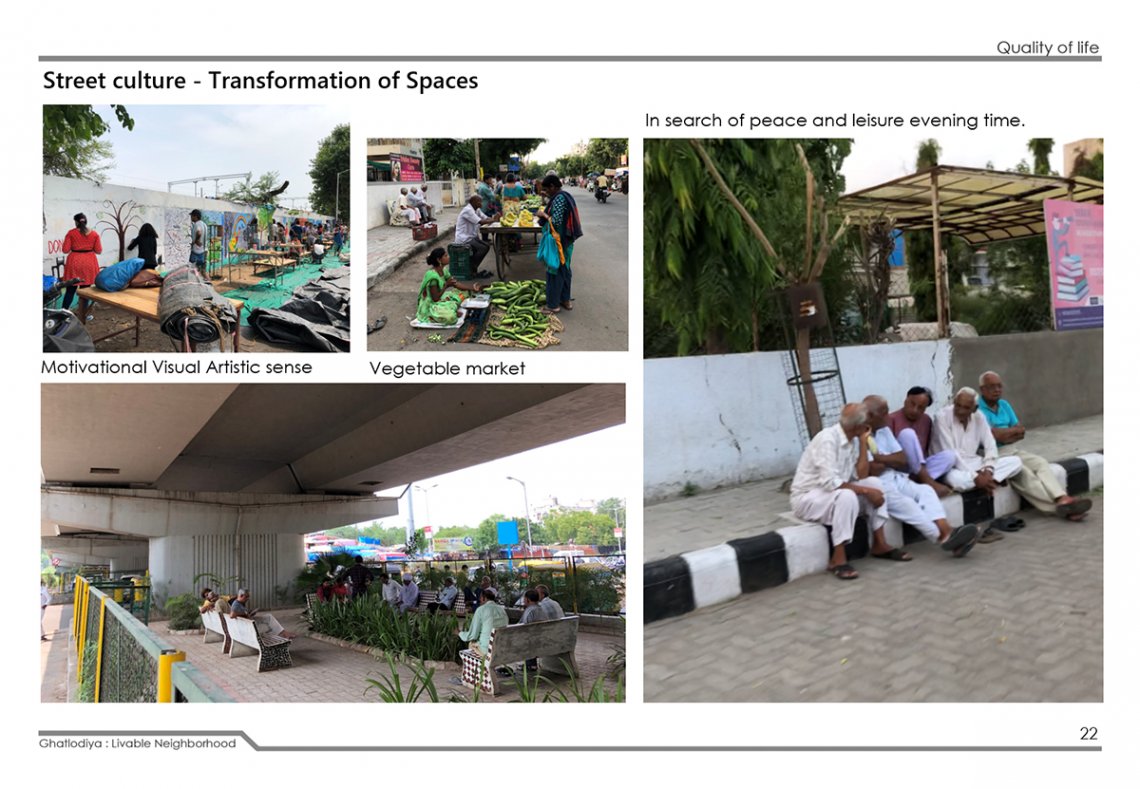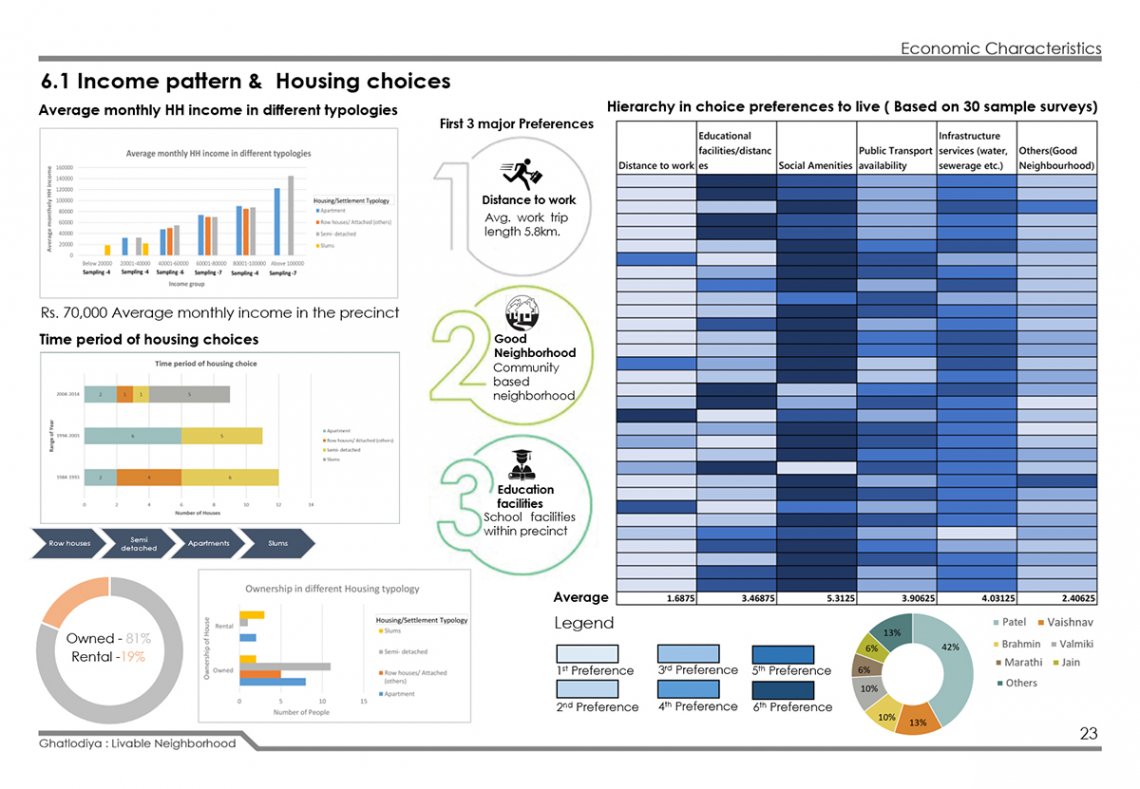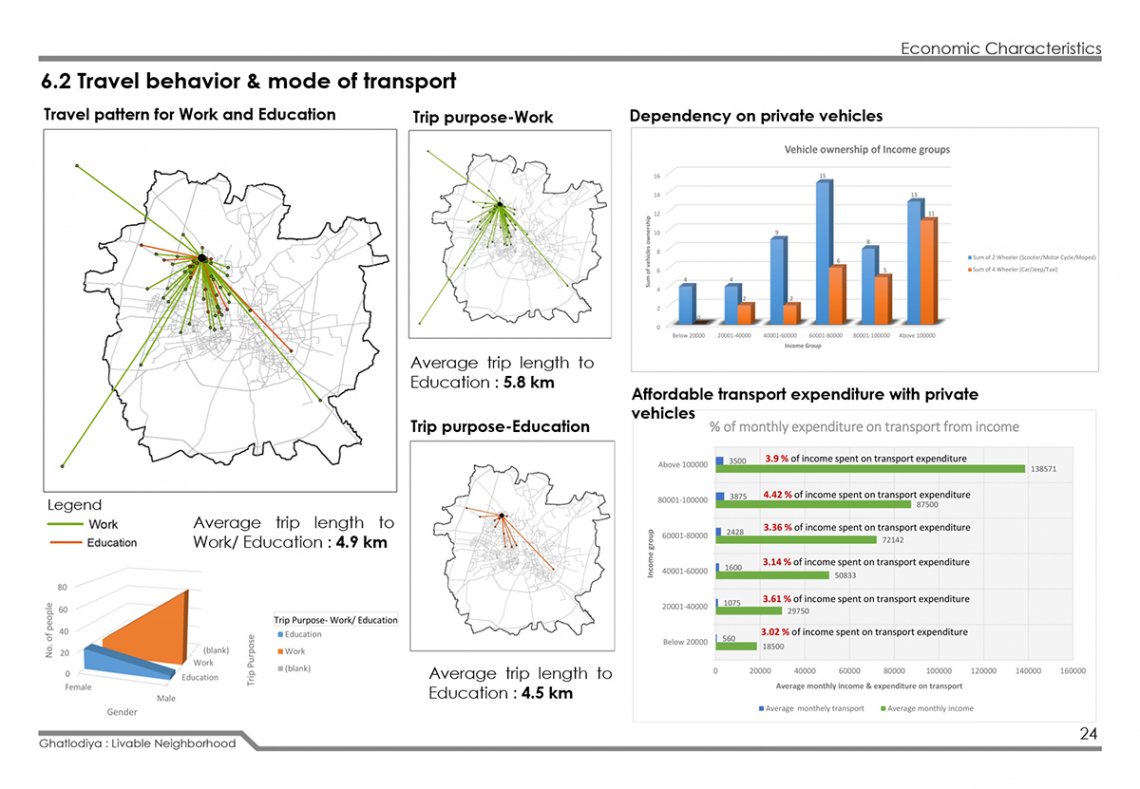Your browser is out-of-date!
For a richer surfing experience on our website, please update your browser. Update my browser now!
For a richer surfing experience on our website, please update your browser. Update my browser now!
The flow of the study from satellite image to different parameters of development. The precinct is located in western part of Ahmedabad in Ghatlodia area that is about 5.3km from CEPT campus & 20km from Ahmedabad main city. Studying Ghatlodiya with respect to history , built-form , employment generation , good governance and basic infrastructure amenities .It shows that the precinct full fills all the requirements of an livable neighborhood. It is observed that precinct has contrasting character which has developed over a period of time by the process of evolution. The migrants mainly consisted of Patel community from Saurashtra who migrated to Ghatlodiya area for job opportunities in nearby areas and affordable housing. Patidar chowk is a junction named in honour of sardar Vallabhbhai Patel. Ghatlodiya area constitutes majorly residential area along with mixed use development on arterial and sub-arterial roads. Development in the precinct increased due to the expansion of Ahmedabad municipal corporation which led to the better infrastructure development. Infrastructure development including educational facilities, Road widening ,transport facilities, public spaces, commercial units along the main roads, efficient water/sewage system all together makes the precinct more livable. The precinct has good road connectivity to the other parts of the city by AMTS and BRTS bus routes. Thus, Self-employed poor working as a vendor serves a basic amenities for the people living in the area. Here, economically richer generate job centers for economically poor at the residence and workplace. Development is a continuous process and people need to adopt it over a period of time. All this factors have led to the precinct into livable neighborhood.
